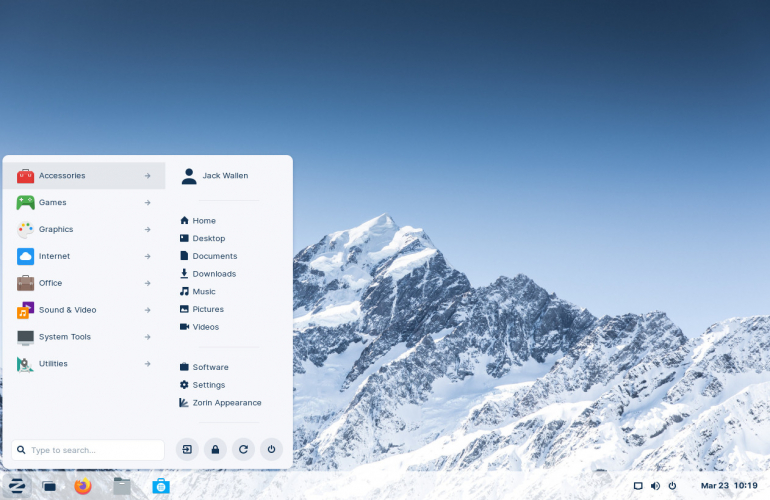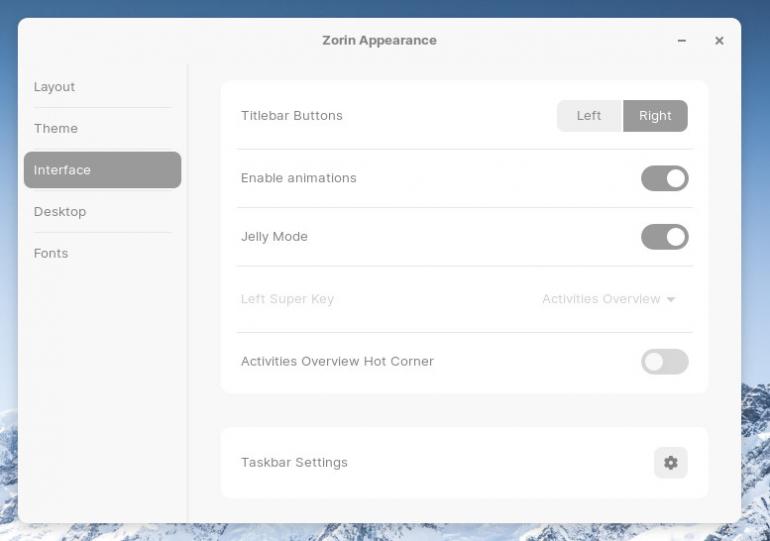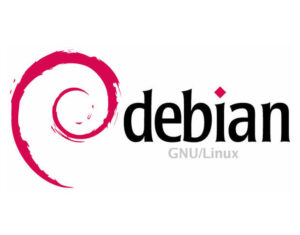ZorinOS 16.1 has been released and offers just enough freshness to keep squarely in the lead as the best distribution for new users. See what this new release offers.

ZorinOS has won over the hearts of many a Linux user. With good reason. Not only is ZorinOS as user-friendly as any operating system on the planet, but it’s also usurped Deepin as one of the most elegant desktop distributions on the market. With the latest release, the developers have, once again, raised the bar for desktop operating systems.
SEE: Linux turns 30: Celebrating the open source operating system (free PDF) (TechRepublic)
I upgraded my ZorinOS Pro edition to version 16.1 to see what there was to see and came away just as impressed this time as I was with the last release of the OS. The process of getting ZorinOS 16 to 16.1 was the same as it is with any Ubuntu-based distribution. Although it can be done via the GUI tools, I generally opt to go the command route, which required a process that looks very much like this:
sudo apt-get update
sudo apt-get upgrade -y
sudo apt-get dist-upgrade -y
sudo do-release-upgrade -y
The process took about 30 minutes total and, once I rebooted, I wound up with a broken installation (getting the “Something has gone wrong” screen after login). It took me a while, but I circumvented the issue by starting in recovery mode, creating a new user and then logging in with that new user. I also opted to download ZorinOS Core to see what was what. Because of this incident, I would highly recommend not going the command-line route for upgrading and let the GUI tools take care of the task. Even better, just download a new ISO and go with a fresh installation.
Either way, let’s take a look at what this latest release has to offer.
The Linux kernel
As with most Linux upgrades, the latest release starts with the kernel. ZorinOS 16.1 ships with a kernel that is unpatched against Dirty Pipe. But as soon as you run the first upgrade, the kernel will be at (or around) version 5.13.0-37, which is patched against the vulnerability and brings better support for hardware such as:
- Newer NVIDIA graphics cards including the RTX 3050
- Framework Laptop
- Apple Magic Mouse 2
- Sony PlayStation 5 DualSense controller
- Intel Core 12th generation processors
- Epson, HP, Canon, Fuji Xerox, DYMO and other printers
- More Wi-Fi and audio hardware
Although 5.13 isn’t the newest kernel (for instance, my Pop!_OS is running 5.16.11), it is the current LTS version, so it’s obvious why the developers went that route. ZorinOS 16.1 is supported through August 2025, so they’d want a kernel that can go the distance.
App updates for ZorinOS 16.1
Probably the biggest update to ZorinOS 16.1 is LibreOffice, which now ships with version 7.3, which is a significant upgrade to the office suite. LibreOffice 7.3 is a massive improvement over the previous iterations and includes features like:
- Better MS Office compatibility
- Enhanced track changes for text and tables
- More editing options
- Significant performance boost
- Visual refresh
Other application updates include Firefox 98, GIMP 2.10.18, GNOME 3.38.6 (the ZorinOS desktop is based on GNOME), Mesa 21.2.6, snap 2.54.3+20, and Evolution 3.36.5. And, thanks to the addition of snap, there’s plenty of third-party apps (open- and closed-source) to be installed from the Software store.
Ultimately, however, the real treat of ZorinOS is just how beautiful the desktop is. Even the Core version (which doesn’t include all of the various layouts you’ll find in ZorinOS Pro) is as elegant a desktop (Figure A) as you’ll find on the market.
Figure A

The thing about this upgrade is that it doesn’t make any huge changes. That’s a good thing because this is certainly a situation where the adage “If it isn’t broken, don’t fix it” applies. ZorinOS 16 was a brilliant release and 16.1 simply adds a bit of polish and bug fixing into the mix. The developers were right to not monkey with the sauce in this desktop distribution.
Performance in ZorinOS 16.1
With the bug fixes and new application updates added, ZorinOS 16.1 performs beautifully. Applications open quickly. Even with animations and Jelly Mode enabled (Figure B), the desktop is flawless.
Figure B

I’d pit ZorinOS 16.1 against any Linux desktop, confident it would perform equally as well or considerably better. That’s not to say you should consider ZorinOS an option for older hardware (as this isn’t a lightweight distribution). But it will absolutely shine on most modern systems (even as a virtual machine with only 3GB of RAM it performed beyond expectations).
Who is ZorinOS best suited for?
Simply put: anyone. ZorinOS makes Linux incredibly easy for any user (regardless of skills) to dive in and not suffer the slightest hitch. For the longest time, my go-to distribution for new users was Ubuntu, but since the release of 16.0, ZorinOS has usurped that title. And with the extra polish (and updated apps) found in 16.1, the title of best Linux desktop distribution for new users belongs to ZorinOS.
But don’t think this desktop is limited to those with little to no Linux skills. Anyone, no matter the skill level, would be perfectly happy with ZorinOS as their primary desktop operating system.
Don’t believe me? Download ZorinOS 16.1 now and find out.
Subscribe to TechRepublic’s How To Make Tech Work on YouTube for all the latest tech advice for business pros from Jack Wallen.
Source of Article



